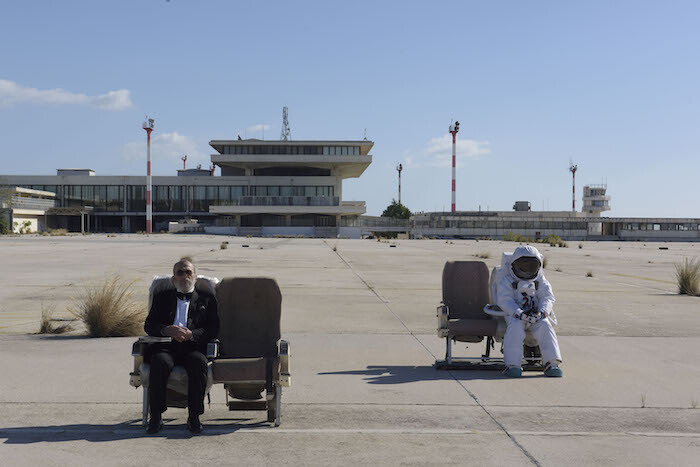“Given Brexit, the European refugee crisis, and the uprisings against racist police violence in the US, the contemporary resonance of such work is painfully clear, and the exhibition thus offers a welcome opportunity to make a case for Akomfrah’s importance,” writes art-agenda’s regular contributor Andrew Stefan Weiner in his recent review of John Akomfrah’s New York exhibition.
At this moment, when the world seems to be collapsing at an accelerated pace and the near future hints at the possibility of even darker scenarios, there’s the need for exhibitions to invent modes of addressing the present situation, and for artists to criticize and revise the contemporary situation and, through their work, propose paradigm shifts.
Such necessity and urgency to acknowledge and consider the present have been particularly visible in many of art-agenda’s recent writings and this summer break is a timely moment to revisit some of these texts.
Brexit and other crises
On the wake of the Brexit, Jeremy Millar reviews the Liverpool Biennial, reflecting on how it “feels to be in Britain, visiting this unashamedly international event exactly two weeks after the country—but not Liverpool—voted to leave the European Union,” and noticing how the “sense of reconstituting an old ideal is one of the strongest themes in the biennial.” Writing on the forms of resistance tested and applied by the artistic duo Zofia Kulik and Przemysław Kwiek, Stefan Heidenreich reviews KweiKulik’s “The Monument Without a Passport” Berlin exhibition, advising that “given our current economic and political situation—with ever-more powerful state apparatuses of surveillance and growing movements of resistance—there is more than one good reason to give the work of KwieKulik a closer look today.” Andrew Stefan Weiner finds “lamentable and somewhat curious that John Akomfrah is just now receiving his first major exhibition in the US,” yet he’s left the New York exhibition longing for more, as “given the scale and scope of current crises, it seems fair to ask more from artists as thoughtful and capable as Akomfrah. This moment needs its own version of Handsworth Songs; one hopes Akomfrah will go on to make it.” Ana Teixeira Pinto reviews Michael Rakowitz’s “The invisible enemy should not exist” exhibition in Berlin, a show that attempts to “undo the cultural erasure of Iraq (by) recreating, one by one, the thousands of artifacts looted from its facilities.”
Cinematic projections
Evangelical books, air travelling, and miracles—Pedro Neves Marques reviews Michael Stevenson’s current exhibition in London, noting how through the exhibition, “in Papua New Guinea rapture takes the shape of a plane full of nuns.” Andrew Berardini reviews “Made in LA,” observing how the exhibition deals with the city’s imaginary and cinematic projections, to finally encounter this “place of sordid romance and strange light, striking visions of natural beauty behind and between stucco apartments.” Revisiting Mark Leckey’s recent exhibitions, Valerio Mannucci reviews the artist’s show in Rome, concluding that “the most significant aspect of the new work by Leckey is the fact that it confuses the spatial and temporal planes, so that it no longer matters whether we really are inside a church full of objects or whether their presence makes us feel as if we are in a world of things.”
Images in motion
From Barcelona, Lucy Reynolds reviews the Loop art fair, “the oldest and most established initiative to assert the commercial potential of film and video,” reflecting on “the instrumental role of film and video takes on a significant historical resonance in art discourse,” and describing her encounter with “the monographic focus of shows such as those of (Harun) Farocki, Andrea Fraser, and (Anthony) McCall” beyond the space of the fair. Considering “the documentary’s entrance into the art world as an aesthetic and as a research mode,” Rachael Rakes responds to Rosalind Nashashibi’s “Two Tribes” exhibition in New York, in which the artist “pairs experimental documentary filmmaking with her own hintingly figurative abstract paintings. This combination leads to another kind of didacticism for the exhibitionary space: the works come together not to explain what to know or take away, but how to look, or what to look for, in the other.” From London, Isobel Harbison reviews Sam Lewitt and Lucy Raven’s “Wild Sync & Weak Locals” exhibition, observing how it “presents an inspired pairing of two artists adept at exploring the complex dynamics of power, and how capital is felt at different points of its production.”
Visceral sculptures
Two narratives are intertwined in Kevin McGarry’s review of Jordan Wolfson’s recent New York exhibition, that of the relation between an artist and his gallery, and that of Colored sculpture, “a lacquered, wincing boy, cut up and marionetted by a brutal contraption of chain pulleys in such a way that he is popularly referred to as a robot (which) delivers on all desires as unassailably visceral yet trollingly, tauntingly solicitous of condemnation.” Alan Gilbert reviews Sadie Benning’s “Green God” double New York exhibition. Through the two shows he observes the dual nature of the artist, whose “work mingles the shared and the individual, e.g., the unique face in the crowd; not painting as sculpture, but painting and sculpture.”
Sensual bodies
Lea Porsager’s exhibition in Copenhagen is the starting point for Milena Hoegsberg’s considerations on the artist’s overall practice and how in it “the power of the collective ‘female’ force is ever present. In Porsager’s work, the body is the convergence of both intellectual and intuitive knowledge, a site of negotiation between ego(s) and the surrounding world.” Amanda Lee Koe’s Spaces feature signs art-agenda’s summer break. “The Sexual Potential of the Gallery” is a short story that takes place across Singapore’s art galleries and museums, following the sensual encounters of two art lovers.

